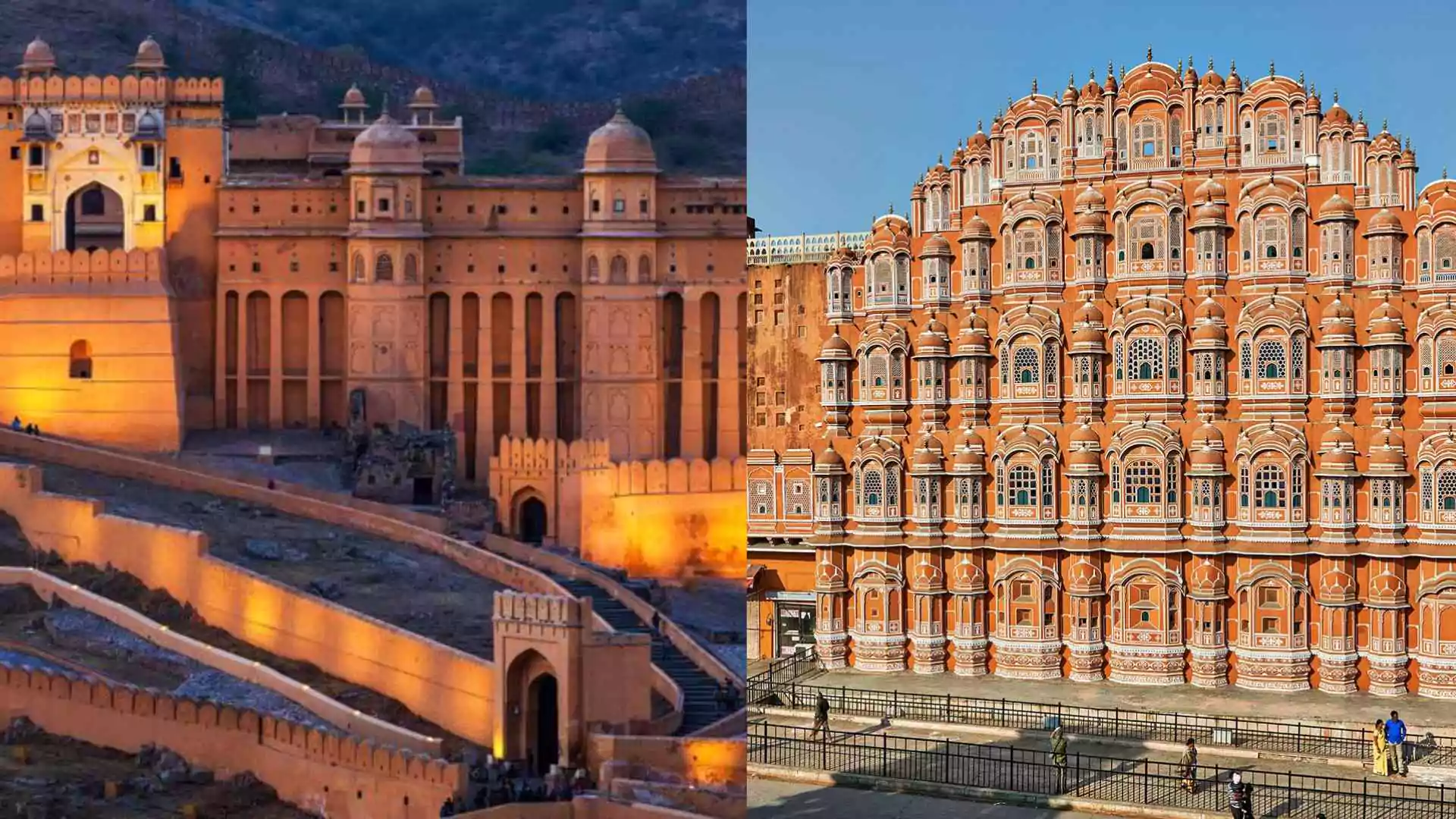JD Vance Visits Amer Fort And Hawa Mahal In Jaipur With Family; What Makes The Two Monuments So Iconic?

On a break from politics and diplomacy, U.S. Vice President JD Vance spent Monday soaking in the colors, sounds, and stories of Jaipur with his wife Usha and their three kids—Ewan, Vivek, and Mirabel. Their stop in the Pink City was all about exploring heritage, history, and a little bit of royal magic. The Vance family is currently on a four-day visit to India, and their time in Rajasthan turned out to be one of the most vibrant parts of the trip. With Amer Fort and Hawa Mahal on their list, the day was packed with iconic sights, traditional welcomes, and a whole lot of awe. A Royal Welcome at Amer Fort Their first stop was the grand Amer Fort, perched high on the Aravalli hills just outside Jaipur. It’s one of the city’s most visited places, and on Monday, it was closed to tourists for the day to allow the Vance family some peaceful time to explore. As soon as they arrived, it was clear this wasn’t going to be just any tour. Folk musicians played live music, dancers in bright traditional outfits twirled and clapped, and two beautifully decorated elephants—Chanda and Pushpa—stood tall in greeting. These elephants were specially trained at Hathi Gaon, a nearby village where elephants are cared for and prepared for cultural ceremonies like this. The Vance family seemed genuinely delighted. They watched the performances, took in the view, and walked through the enormous courtyards and marble halls of the fort. The architecture—an incredible mix of Rajput strength and Mughal beauty—told stories from every corner. What Makes Amer Fort So Iconic Amer Fort (also spelled Amber Fort) isn’t just a pretty place. It was once the capital of the Kachwaha Rajputs before Jaipur was even built. Today, it stands as one of the most famous royal forts in India—and it’s easy to see why. Built with red sandstone and white marble, the fort is a mix of military strength and royal luxury. The huge ramparts and cobbled paths lead to majestic spaces like the Diwan-e-Aam (Hall of Public Audience), Sheesh Mahal (Mirror Palace), and Sukh Niwas, where ancient architects used water and wind to naturally cool the rooms. The palace was home to the Rajput kings and their families. There’s even a temple dedicated to the goddess Shila Devi, said to have been brought to Jaipur after a victorious battle in Bengal in 1604. One of the more personal stories from Amer’s history? Raja Man Singh had 12 queens—so he built 12 separate chambers, all connected to his room by secret staircases. Later, Raja Jai Singh, who had just one queen, built her a chamber three times as large. And yes—if you ever visit as a tourist, you can ride an elephant up to the fort gates, just like royalty once did. Next Stop: The Breathtaking Hawa Mahal After Amer, the Vances headed into the heart of Jaipur to visit the Hawa Mahal—or as it’s famously known, the Palace of Winds. If Amer Fort was about grand courtyards and warrior kings, Hawa Mahal was all about grace, privacy, and clever design. This five-story building is hard to miss—pink, delicate, and shaped like a crown. Built in 1799 by Maharaja Sawai Pratap Singh, it was designed by Lal Chand Ustad and inspired by the look of Khetri Mahal. The most fascinating part? It has 953 tiny windows, known as jharokhas, each carved with delicate latticework. These windows let the royal women look down at the city’s street life and festivals without being seen. At the same time, the design allowed cool breeze to flow through the palace—natural air conditioning centuries before it was a thing. Here’s a fun fact: what looks like the front of the palace is actually its back. And it doesn’t even have a foundation—it leans slightly, which only adds to the architectural wonder. Why These Two Places Matter Amer Fort and Hawa Mahal aren’t just postcard spots. Amer tells the story of a time when kings ruled from mountaintop palaces and designed forts that could both defend and dazzle. It’s where architecture met strategy, and every stone has a story. Hawa Mahal, on the other hand, was built for the quiet strength of royal women—giving them a way to see the world without being seen. It’s delicate, artistic, and deeply symbolic. Together, they paint a picture of Rajasthan’s past that still feels alive today. Must Read: Tired Of Your Corporate Job And Want To Switch To Digital Nomadism? Here’s A Guide To Help You Understand Better

















